In the Library, On the Experience of Wolfgang Tillmans
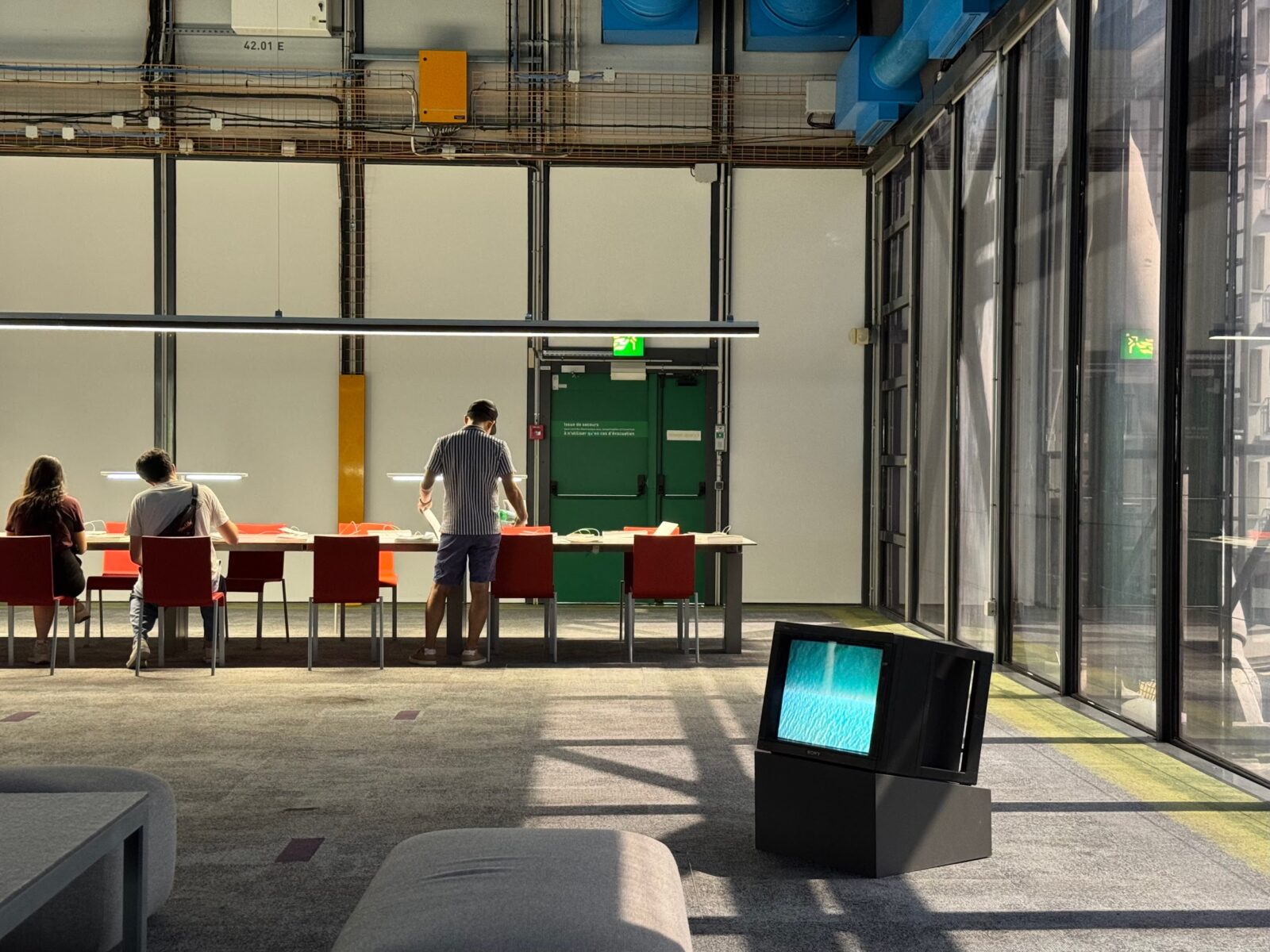
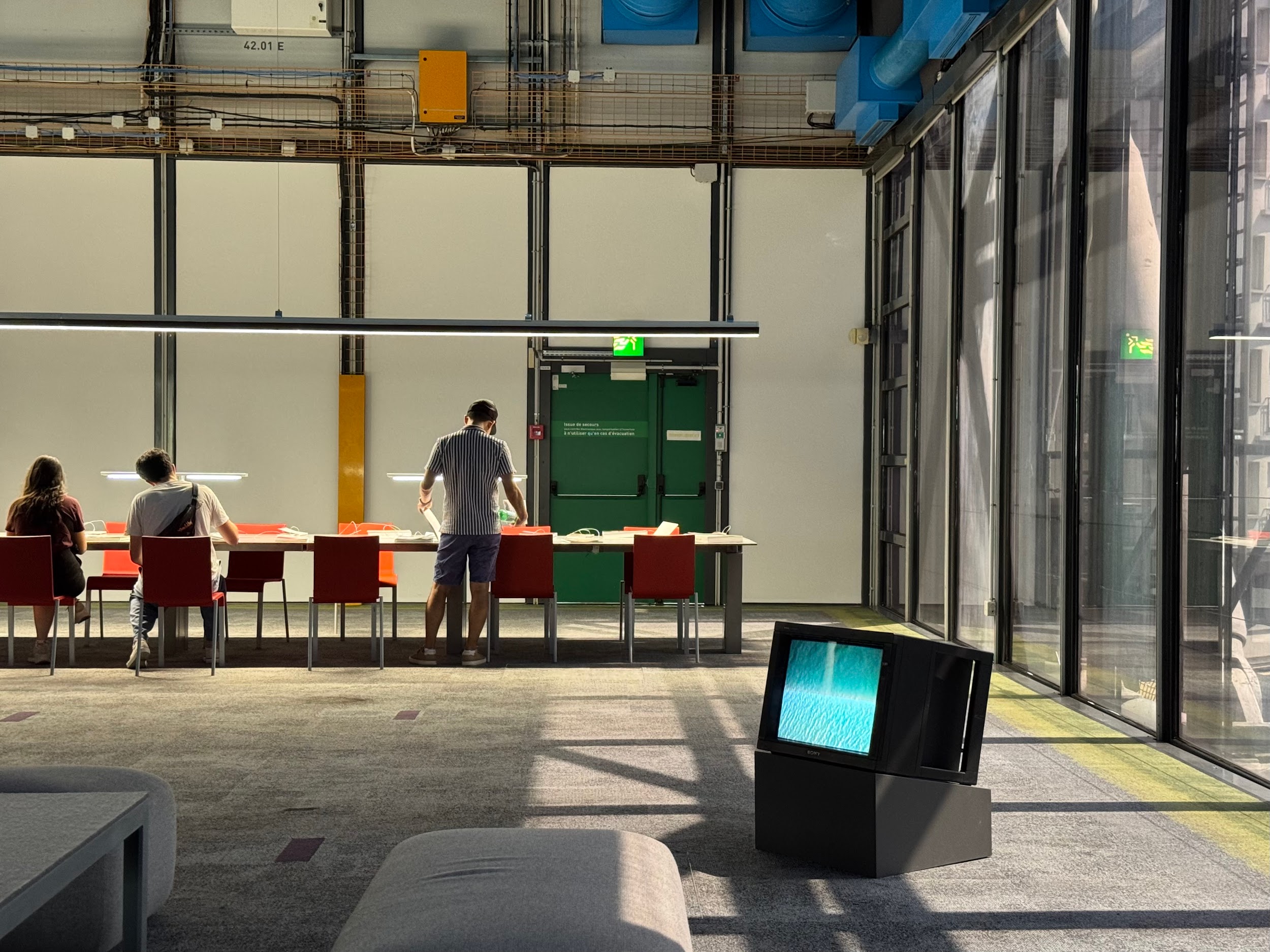
While I can’t say I know Wolfgang Tillmans, I feel as though I’ve dragged the organ of my tongue across that of his brain.
I didn’t know who he was before seeing his exhibition in Paris by accident this August. I was a Tillmans virgin, as Louise Darblay put it rightly in ArtReview, but I’ll remember this show like a first oyster.
Scattered like New York City at night through an airplane window—that’s what some of the work feels like. Seeing exactly this two weeks later on the way home, I flew back in time, which, as Tillmans reminds me, doesn’t exist outside of the name we give to pin it in place.
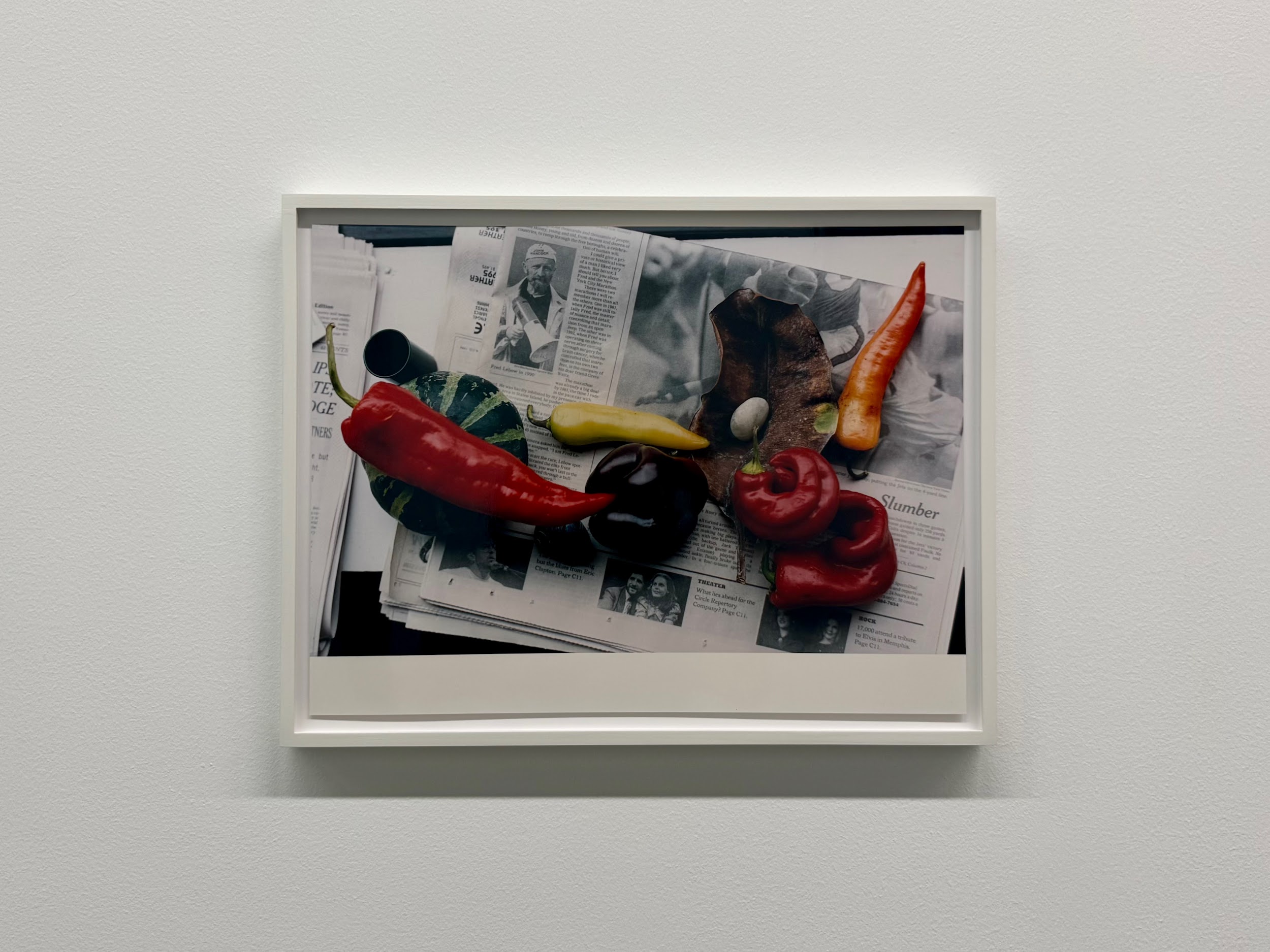
Rien ne nous y préparait/ Tout nous y Préparait, Nothing could have prepared us/ Everything could have prepared us, is spread throughout the bibliothèque publique d’information of the recently closed-for-renovations Centre Pompidou. This library is all that remains open.
I look from a Rothko-like color block to a naked woman with her legs spread and I think about how “2020 is as far from 1980 as 1980 is from 1940.” It’s fruit and vegetables and an egg in a rotting leaf on newspaper print next to an empty film canister—all matter, just captured at a different stage.
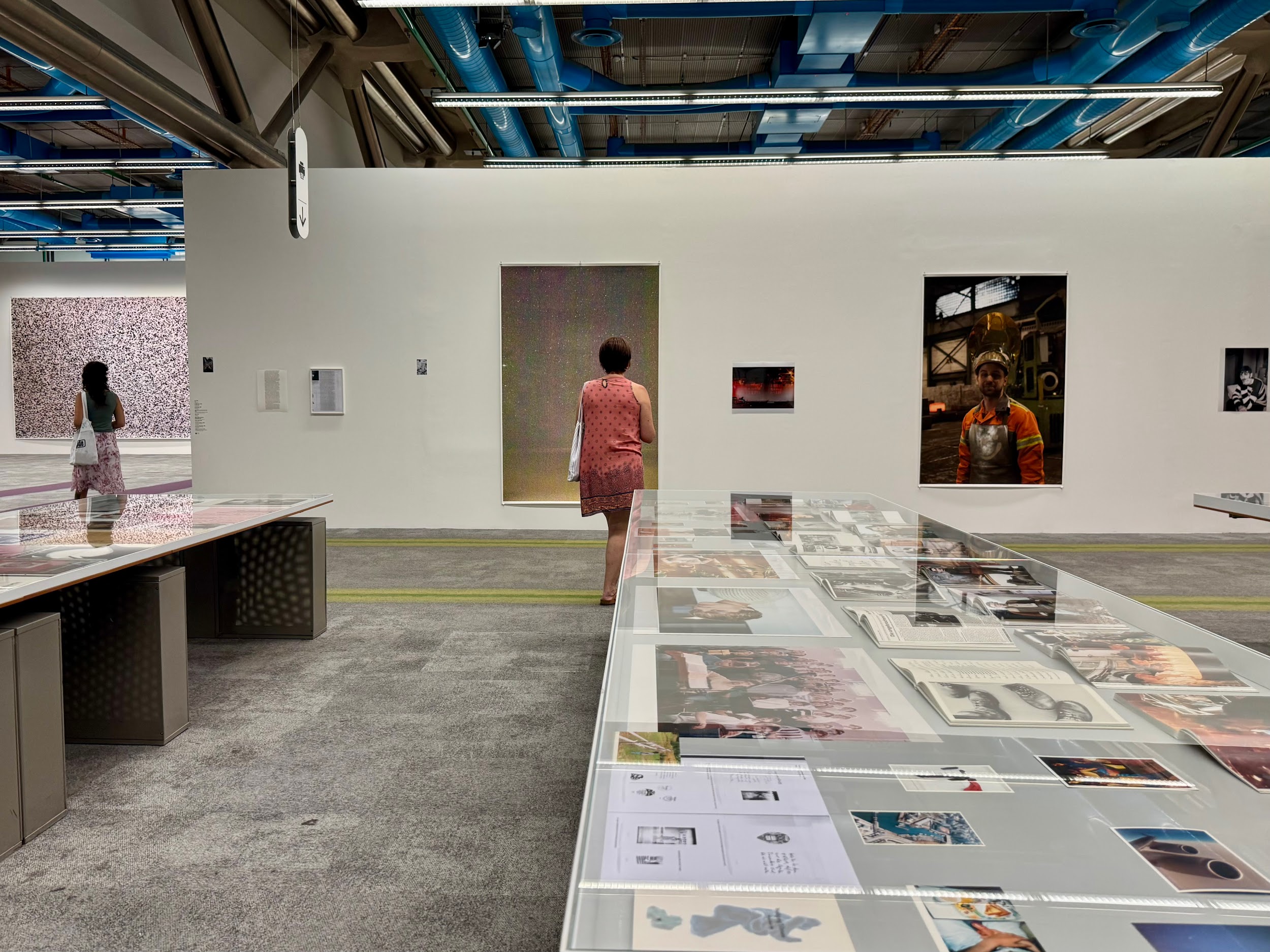
The works are displayed in Tillmans’ typical fashion: sporadically stuck to the wall with Scotch tape and binder clips, interjected by videos, sound, and vast amounts of other media similarly spread. Information is shattered.
Walking through the 6000m of the installation, I repeatedly thought, now this is how you display collage. I’m confronted as both a human and an American. Potpourri of a never-so-distant past is collaged on tables under a glass screen. It’s just like what we’re used to: Everything everywhere all at once. The exhibition is both prescient and present—together and separate.
There is a discourse between everything, and the puzzle one puts together is a feeling, walking through each image and stringing themselves along with it in a word. There’s no need for wall text. This artist’s hand is writing an open book.
Of which there are many: all laid out on a display table, by Tillmans and others, with photographs, news clippings, text, magazines, ads, and whatever other media seemingly fit, even screenshots of Instagram posts.
This slew of images layer a palimpsest (and let it be said, a word is an image, too). It is similar if not actually some of the same to what was displayed at his 2022 “retrospective” at MOMA, To look without fear, an installation which Tillmans was also intimately involved with.
And Peter Schjeldahl was right in calling him genius. Though I wish he’d taken more time with the table montages in that version of the ongoing Truth Study Center (2005-), of which he says “smartly anticipated today’s torrent of information via institutional and social media—and its numbing effect,” yet ultimately claiming the same for the work’s success, or lack thereof, “Enough of too much induces apathy.”
But maybe that’s the point. What else is anyone to do but “quickly scan,” when drowning in a flood? How does one keep their head above water without treading it? We’re all forced to keep on scrolling!
Sitting at the bar last week, a man to my right made a joke about how many dirty glasses were in front of me. The bartender was too drunk to clean. But I can hardly look at him while he’s speaking. I’m too distracted by the screen left open in his hands, where a girl in Gaza is lit up by a white frame. Emaciated, her skin is burned and bloody. This child is dead. Her picture looks just like the rest of them.
When we turn our heads back towards ourselves, he swipes with a fat and unfeeling finger, eyes lost in so much light.
Rien ne nous y préparait/ Tout nous y Préparait acts almost like a camera obscura if it were to turn the projection around one more time. There are even images of the library itself included in displays and tables lined with a single mirror. A lot of it is like Lünburg (autoportrait) (2020), where a front-facing FaceTime balances against a water bottle and in the tiny rectangle is a head on a hospital bed behind another black lens talking to pink linen.
The work is aware of its place, not just in the library, but in art time. There are scrawling press releases and work from other artists—dried leaves are taped to a white wall. An open space is lined by rows of computers, half with screens playing recordings of people using them days prior, the other with seats filled by people viewing the videos downloaded onto the screens now—as if the digital materialized in flesh.
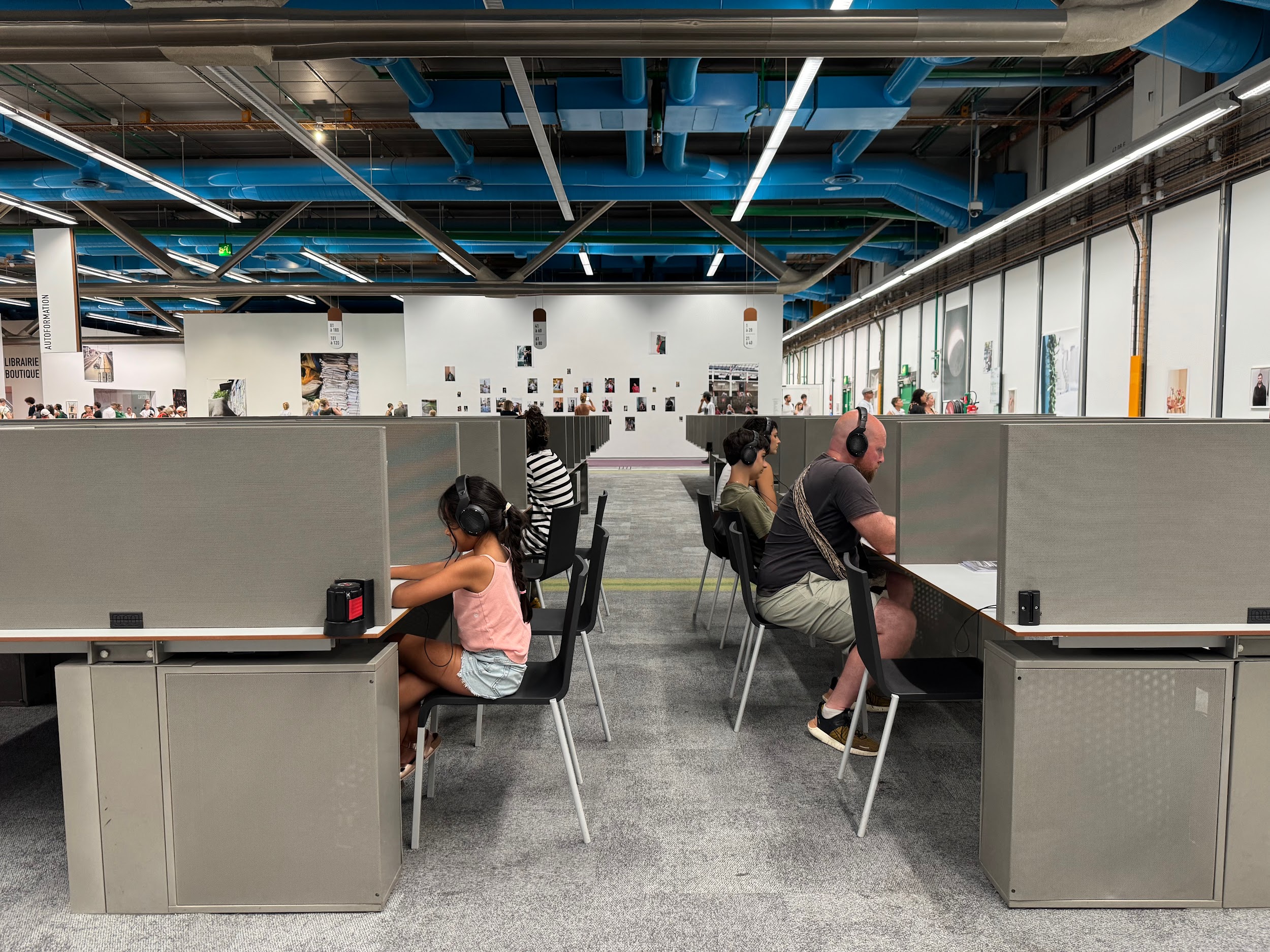
A 2019 article from Quanta Magazine is printed in both English and French on respective tables: “A Mathematical Model Unlocks the Secrets of Vision.” It presupposes the basic knowledge that sight is the product of subjective reflection. Information enters through the front of the eye to the retina, travels into the cortex, and turns into vision. However, this line of communication doesn’t only go one way, as the article points out: Information keeps coming back.
Lights buzz and I see Tillmans has created a feedback loop. Images and sounds repeat and return. I read prefaces on one table then flip through the rest of the pages on another. It’s as if he says, here is what I did, look, and now, see it for yourself. Things may be pinned, but it’s just tape.
We’re even invited to try it for ourselves with another medium near and dear to Tillmans. Inside a tiny room are a few photocopiers, issues of Le Monde, The New York Times, and laminated posters from the show. On my way out, I observe two young girls carefully pick three pieces and collage them under the lid of the device, watching light flash.
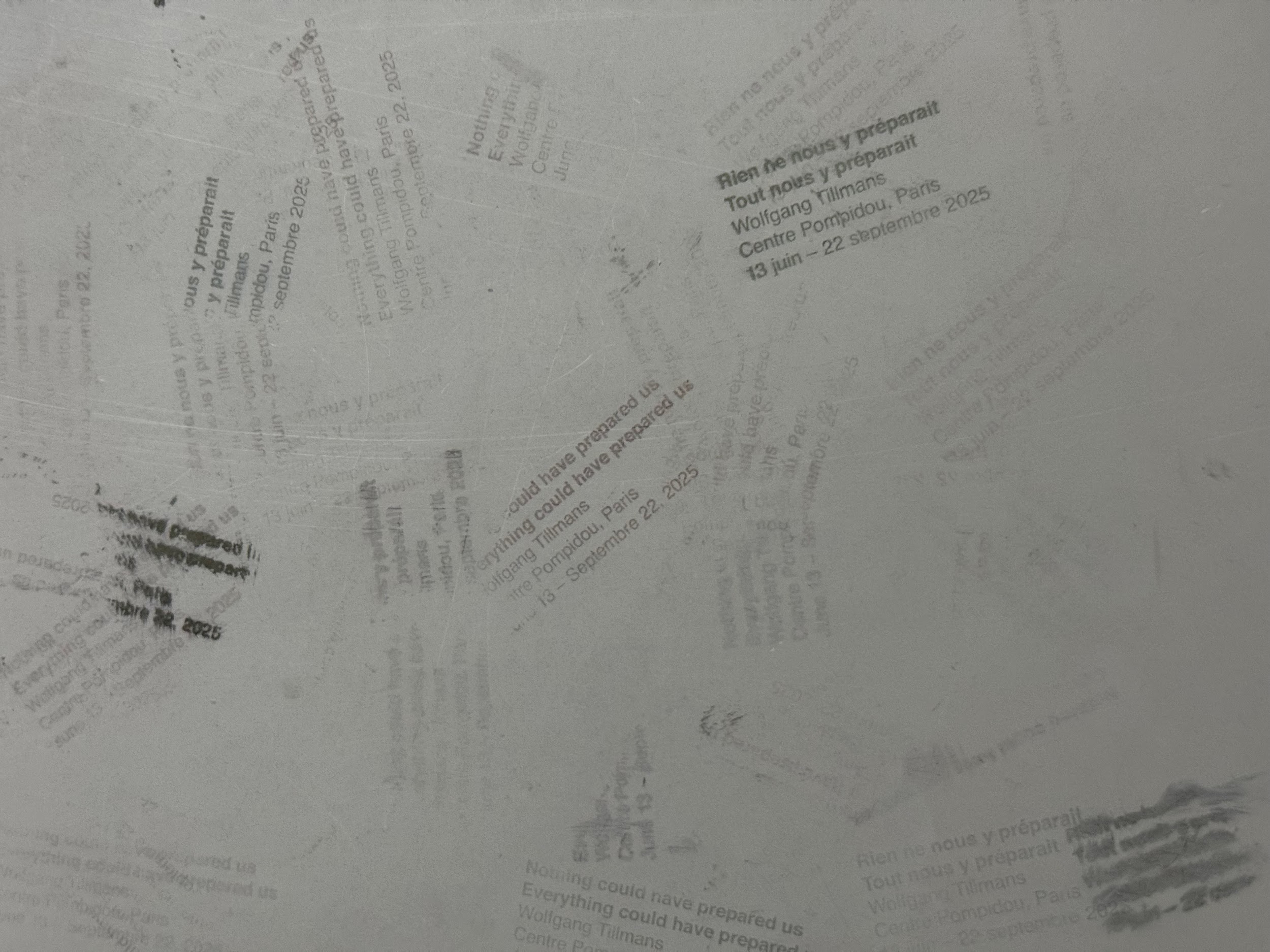
The title, Nothing could have prepared us/ Everything could have prepared us, apparently inspired by a personal affiliation, also seems prompted by one shared in a universal: How could we have let this happen? We often ask, until we look, and see how we always have.
Rien ne nous y préparait/ Tout nous y préparait, Nothing could have prepared us/ Everything could have prepared us: Wolfgang Tillmans at The Centre Pompidou, Paris is open through September 22, 2025.
You Might Also Like
What's Your Reaction?
Madelyn Grace likes to take long walks and write things down.

